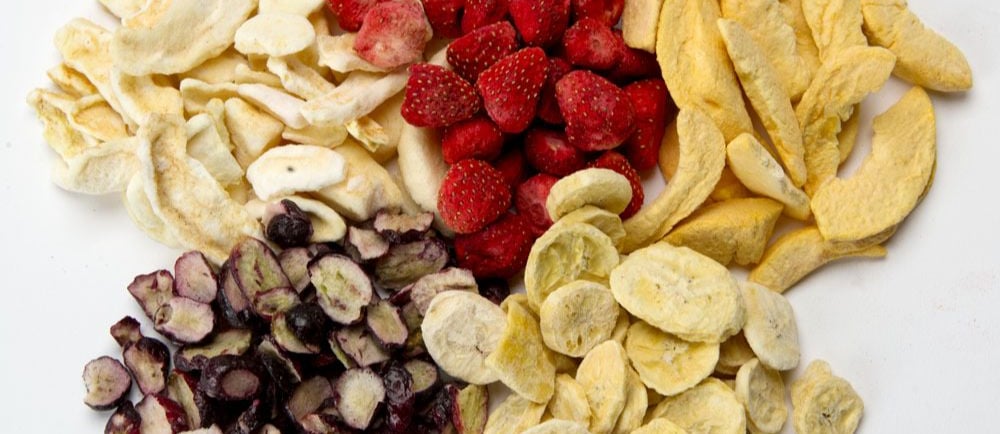Sustainable Freeze-Drying: A Boost for South Korea's Circular Economy
This article explores how sustainable freeze-drying transforms South Korea's surplus produce into valuable, long-lasting products, sharply reducing food waste and boosting the circular economy.
BUSINESSFREEZE DRIED FRUITSHEALTHFREEZE DRYASIAN FOODSFREEZE DRIED SNACKSTEXTUREFREEZE DRIED PRODUCTSENVIRONMENTFOOD WASTEASIAFREEZE DRIED FOODSFREEZE DRYINGREGULATIONFREEZE-DRIED PRODUCT SUPPLIERSFOOD PRESERVATIONPRODUCTIONTECHNOLOGYNUTRITIONSOUTH KOREA
11/12/20252 min read


🇰🇷 Sustainable Freeze-Drying: A Boost for South Korea's Circular Economy
South Korea is a global leader in food waste management, boasting an impressive recycling rate of around 95% for discarded food, often converting it into animal feed, compost, or biogas. However, a significant challenge remains: preventing perfectly edible surplus produce—such as cosmetically imperfect or seasonal overstock—from ever becoming waste. This is where freeze-drying technology is emerging as a powerful, sustainable solution, helping to close the loop on food production and strengthen the circular economy.
The Problem of Produce Surplus
Agricultural harvests often result in a significant amount of "ugly" or surplus fruits and vegetables. These items are often rejected by retailers purely for aesthetic reasons or due to market gluts, despite being completely sound in quality and nutritional value. Discarding this perfectly good food is an economic loss for farmers and a drain on environmental resources used for its production.
Freeze-Drying: Transforming Waste into Value
Freeze-drying, or lyophilization, is a gentle preservation method that transforms perishable surplus produce into high-value, shelf-stable products. The process involves freezing the food, then placing it in a vacuum chamber where the frozen water sublimates—turns directly from ice to vapor—leaving behind a lightweight, dry product.
Key Benefits:
* Exceptional Preservation: Unlike traditional drying, freeze-drying retains up to 90% of the original nutrients, color, flavor, and texture. This minimal processing is highly attractive to today's health-conscious consumers.
* Extended Shelf-Life: The near-total removal of moisture means freeze-dried products can last for years without refrigeration , significantly reducing spoilage in the supply chain and at home.
* Reduced Logistics Costs: The dramatic reduction in weight (up to 90%) and volume leads to much lower transportation and storage costs.
Fueling the Circular Economy
In South Korea, forward-thinking businesses are harnessing this technology to create new, sustainable revenue streams, aligning perfectly with circular economy principles:
* Upcycling Imperfect Produce: Farms and processors are using surplus fruits (like strawberries, apples, and mandarins) and vegetables to create diverse freeze-dried products. These include healthy, convenient snacks, ingredients for cereals and granolas, and flavor-packed powders for beverages and ready-to-eat meals like instant bibimbap or porridge. This effectively "upcycles" food that would have otherwise been destined for the waste stream.
* Creating Premium Products: Because of the high-quality retention, freeze-dried products command a premium price. This added value provides new income opportunities for farmers and small businesses, encouraging sustainable practices and waste reduction at the source.
* Meeting Consumer Demand: The South Korean market shows a strong and growing appetite for convenient, healthy, and minimally processed foods. Freeze-dried items tick all these boxes, appealing to busy urban populations, outdoor enthusiasts, and parents seeking nutritious baby snacks.
By converting vulnerable, short-shelf-life produce into durable, versatile, and desirable products, sustainable freeze-drying is not merely managing food waste; it is preventing it and creating value. It represents a vital technological leap in South Korea's journey toward a resilient, profitable, and truly circular food system.
Quality
Premium freeze-dried products for healthy snacks and long-term storage.
Innovation
Sustainability
© 2024. All rights reserved.
